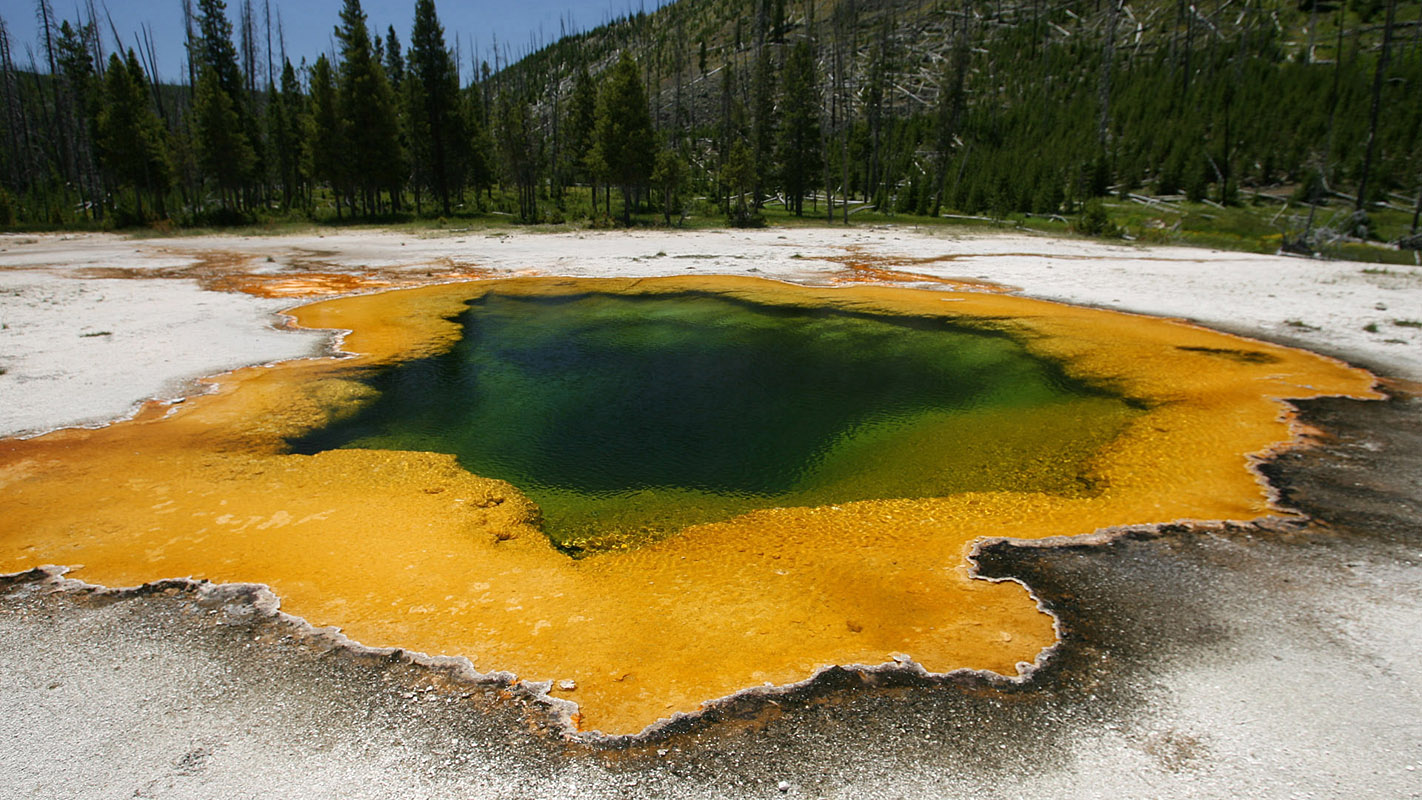Unique Proteins Found in Heat-Loving Organisms Bind Well to Plant Matter

For Immediate Release
Unique proteins newly discovered in heat-loving bacteria are more than capable of attaching themselves to plant cellulose, possibly paving the way for more efficient methods of converting plant matter into biofuels.
The unusual proteins, called tapirins (derived from the Maori verb ‘to join’), bind tightly to cellulose, a key structural component of plant cell walls, enabling these bacteria to break down cellulose. The conversion of cellulose to liquid biofuels, such as ethanol, is paramount to the use of renewable feedstocks.
In a paper published online in the Journal of Biological Chemistry, researchers from North Carolina State University, Oak Ridge National Laboratory and the National Renewable Energy Laboratory report the structure and function of tapirins produced by bacteria that live in hot springs across the globe, including Yellowstone National Park. These bacteria, called Caldicellulosiruptor, live in temperatures as high as 70 to 80 degrees Celsius – or 158 to 176 degrees Fahrenheit.
“These hot springs scavengers make proteins that are structurally unique and that are seen nowhere else in nature,” said Dr. Robert Kelly, Alcoa Professor of Chemical and Biomolecular Engineering at NC State and the paper’s corresponding author. “These proteins bind very firmly to cellulose. As a result, this binding can anchor bacteria to the cellulose in plant biomass, thus facilitating the conversion to fermentable sugars and then biofuels.”
In the study, the researchers showed that tapirins bind to Avicel, a cellulose powder that served as a test compound. The researchers also expressed the tapirin genes in yeast; yeast cells with the expressed proteins attached to cellulose, while normal yeast cells could not. The paper also reports the tapirins’ crystal structure.
“Once we saw how unique the tapirins were at the genome level, we worked with protein crystallographers at the National Renewable Energy Laboratory and were able to determine that the tapirins’ protein structure is also completely unique,” said Dr. Sara Blumer-Schuette, the lead author of the study and now assistant professor of biology at Oakland University. “Having structural data for the tapirins is crucial and will allow us to continue to focus on the mechanism used by these proteins to adhere to the cellulose present in plant cell walls. This ultimately is enabling us to design superior strategies to overcome the recalcitrance of cellulose and improve biofuels production.”
“Before now, these proteins were hypothetical proteins, meaning their existence could be predicted but their function never shown,” Kelly said.
Kelly theorizes that, in places like the hot springs at Yellowstone National Park where food sources are rare, the heat-loving bacteria use tapirin proteins to scavenge plant matter that washes into the hot springs after heavy rains or snow melt.
Future work will delve into learning more about the cellulose binding and degradation process, and why a hot springs denizen seems to be so proficient at it.
“The end goal is to engineer these bacteria to not only break down cellulose but also to make a fuel – starting with ethanol,” Kelly said.
The research was supported by the BioEnergy Science Center at Oak Ridge National Laboratory, a U.S. Department of Energy bioenergy research center. Co-authors include Jonathan Conway, Laura Lee and Jeffrey Zurawski from NC State, Markus Alahuhta, Vladimir Lunin and Michael Himmel from the National Renewable Energy Laboratory and Richard Giannone and Robert Hettich from Oak Ridge National Laboratory.
– kulikowski –
“Discrete and structurally unique proteins (tapirins) mediate attachment of extremely thermophilic Caldicellulosiruptor species to cellulose”
Authors: Sara Blumer-Schuette, Jonathan Conway, Laura Lee, Jeffrey Zurawski and Robert M. Kelly, North Carolina State University; Markus Alahuhta, Vladimir Lunin and Michael Himmel, National Renewable Energy Laboratory; Richard Giannone and Robert Hettich, Oak Ridge National Laboratory
DOI: 10.1074/jbc.M115.641480
Published: Online in Journal of Biological Chemistry
Abstract: A variety of catalytic and non-catalytic protein domains are deployed by select microorganisms to deconstruct lignocellulose. These extracellular proteins are used to attach to, modify, and hydrolyze the complex polysaccharides present in plant cell walls. Cellulolytic enzymes, often containing carbohydrate-binding modules (CBMs), are key to this process; however, these enzymes are not solely responsible for attachment. Few mechanisms of attachment have been discovered among bacteria that do not form large polypeptide structures, called cellulosomes, to deconstruct biomass. In this study, bioinformatics and proteomics analyses identified unique, discrete, hypothetical proteins (‘tapirins’, origin from Maori: to join), not directly associated with cellulases, that mediate attachment to cellulose by species in the non-cellulosomal, extremely thermophilic, bacterial genus Caldicellulosiruptor. Two tapirin genes are located directly downstream of a type IV pilus operon in strongly cellulolytic members of the genus, whereas homologs are absent from weakly cellulolytic Caldicellulosiruptor species. Based on their amino acid sequence, tapirins are specific to these extreme thermophiles. Tapirins are also unusual in that they share no detectable protein domain signatures with known polysaccharidebinding proteins. Adsorption isotherm and trans vivo analyses demonstrated the CBM-like affinity of the tapirins for cellulose. Crystallization of a cellulose-binding truncation from one tapirin indicated that these proteins form a long ?-helix core with a shielded hydrophobic face. Furthermore, they are structurally unique and define a new class of polysaccharide adhesins. Strongly cellulolytic Caldicellulosiruptor species employ tapirins to complement substrate-binding proteins from ABC-transporters and multi-domain extracellular and S-layer-associated glycoside hydrolases to process the carbohydrate content of lignocellulose.
- Categories:


